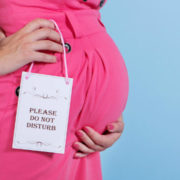How to Prepare For a Cesarean Section
A Cesarean section, or C-section, is a procedure during which a baby is surgically delivered. This procedure is carried out when a vaginal birth isn’t possible when vaginal birth will put the mother’s or baby’s life at risk, A C-section is a form of surgery during which a doctor cuts through your belly and uterus to enable your baby to be born. In some circumstances, a c-section is scheduled in advance. In others, the surgery is needed due to an unforeseen complication. If you or your baby is in imminent danger, you’ll have an emergency c-section. Otherwise, it’s called an unplanned section.
The Preparation
 If you are planning for a scheduled C-section or want to prepare yourself in the event an emergency C-section is necessary, you should be aware of the details of the procedure, get the necessary testing done, and create a hospital plan with your doctor. In most cases, a scheduled C-section will be done under a local anesthetic, so you will be awake during the operation. An epidural is administered in the spine to numb any feeling.
If you are planning for a scheduled C-section or want to prepare yourself in the event an emergency C-section is necessary, you should be aware of the details of the procedure, get the necessary testing done, and create a hospital plan with your doctor. In most cases, a scheduled C-section will be done under a local anesthetic, so you will be awake during the operation. An epidural is administered in the spine to numb any feeling.
Why would I have an emergency c-section?
You may need to have an emergency c-section if problems arise that make continuing labor dangerous to you or your baby. These include the following:
- Your baby’s heart rate gives your practitioner cause for concern, and she decides that your baby can’t withstand continued labor or induction.
- The umbilical cord slips through your cervix (a prolapsed cord). If that happens, your baby needs to be delivered immediately because a prolapsed cord can cut off his oxygen supply.
- Your placenta starts to separate from your uterine wall (placental abruption), which means your baby won’t get enough oxygen unless he’s delivered right away.
- You’re attempting vaginal birth after cesarean (VBAC) and there’s concern about a uterine rupture at the site of your previous c-section incision.
Why would I have a scheduled c-section?
In some cases, your doctor will recommend a c-section instead of a vaginal delivery. For example, you may require a planned c-section if:
- You’ve had a previous cesarean with a “classical” vertical uterine incision (this is relatively rare) or more than one previous c-section. Both of these significantly increase the risk that your uterus will rupture during a vaginal delivery.
- NOTE: If you’ve had only one previous c-section, with a horizontal uterine incision, you may be a good candidate for vaginal birth after cesarean or VBAC. (Note that the type of scar on your belly may not match the one on your uterus.) Or you may choose to have an elective c-section.
- You’ve had some other kind of invasive uterine surgery, such as a myomectomy (the surgical removal of fibroids), which increases the risk that your uterus will rupture during a vaginal delivery.
- You’re carrying more than one baby. (You might be able to deliver twins vaginally, or you may need a cesarean, depending on factors like how far along in the pregnancy you are when delivering and the positions of the twins.) The more babies you are carrying the more likely it is you’ll need a c-section.
- Your baby is expected to be very large (a condition known as macrosomia). Your doctor is particularly likely to recommend a c-section in this case if you’re diabetic or you had a previous baby who suffered serious trauma during vaginal birth.
- Your baby is in a breech or transverse position. (In some cases, such as a twin pregnancy in which the first baby is head down but the second baby is breech, the breech baby may be delivered vaginally.)
- You’re near full-term and have placenta previa (when the placenta is so low in the uterus that it covers the cervix).
- You have an obstruction, such as a large fibroid, that would make vaginal delivery difficult or impossible.
- The baby has a known malformation or abnormality that would make a vaginal birth risky, such as some cases of open neural tube defects.
- You’re HIV-positive, and blood tests done near the end of pregnancy show that you have a high viral load.
Should you be worried about a scheduled C-section?
Doctors will only advise a Caesarean section as a way to minimize the risks to you or your baby, which could arise from natural birth. A C-section is usually a more quick and controlled way of your baby being born.
If you are advised to have a scheduled C-section, it is likely because your doctor sees it as the safest way for your little one to be born. However, as with all major surgeries, it does carry some risks. You are more prone to bleeding and you can experience the side effects of an epidural, which your doctor will discuss with you.
If you have already made a birth plan before the decision to have a C-section was made, then it is still a good idea to take it with you to the hospital. Surgery can be a very scary thing but knowledge is power. If you know what is going to happen, you’ll feel much more confident about it.
What to pack for a scheduled C-section
Take note that you’ll be staying in the hospital a little longer after a scheduled C-section — most likely 2-3 days — and baby will be staying with you.
You’ll want to bring comfortable clothing and slippers. Go for items that are easy to maneuver if you are breastfeeding.
Also, remember that you won’t be able to get out of bed for the first 8-12 hours after surgery, while the epidural wears off. So make sure that the clothes you’ll bring are easy to put on and take off, for easier changing when needed.
Don’t worry too much about what to bring though, as you can always ask your partner or family members to bring anything you forget!
What are the risks of having a c-section?
A c-section is major abdominal surgery, so it’s riskier than a vaginal delivery. Moms who have c-sections are more likely to have an infection, excessive bleeding, blood clots, more postpartum pain, a longer hospital stay, and a significantly longer recovery. Injuries to the bladder or bowel, although very rare, are also more common. It’s also possible that you’ll have a reaction to the medications or to the anesthesia.
Studies have found that babies born by elective c-section before 39 weeks are more likely to have breathing problems than babies who are delivered vaginally or by emergency c-section.
Not all c-sections can – or should – be prevented. In some situations, a c-section is necessary for the well-being of the mother, the baby, or both. Ask your practitioner exactly why he is recommending a c-section. Talk about the possible risks and advantages for you and your baby in your particular situation.
If you’re due to give birth to your little one by a scheduled C-section, don’t panic. Relax and think positive thoughts — you and your baby can do it!
The information, including but not limited to, text, graphics, images and other material contained on this website are for informational purposes only. The purpose of this website is to promote broad consumer understanding and knowledge of various health topics. It is not intended to be a substitute for professional medical advice, diagnosis or treatment. Always seek the advice of your physician or another qualified healthcare provider with any questions you may have regarding a medical condition or treatment and before undertaking a new health care regimen, and never disregard professional medical advice or delay in seeking it because of something you have read on this website.
Resources:
https://www.wikihow.com/Prepare-for-a-Cesarean-Section
https://sg.theasianparent.com/how-to-plan-for-a-scheduled-c-section/













